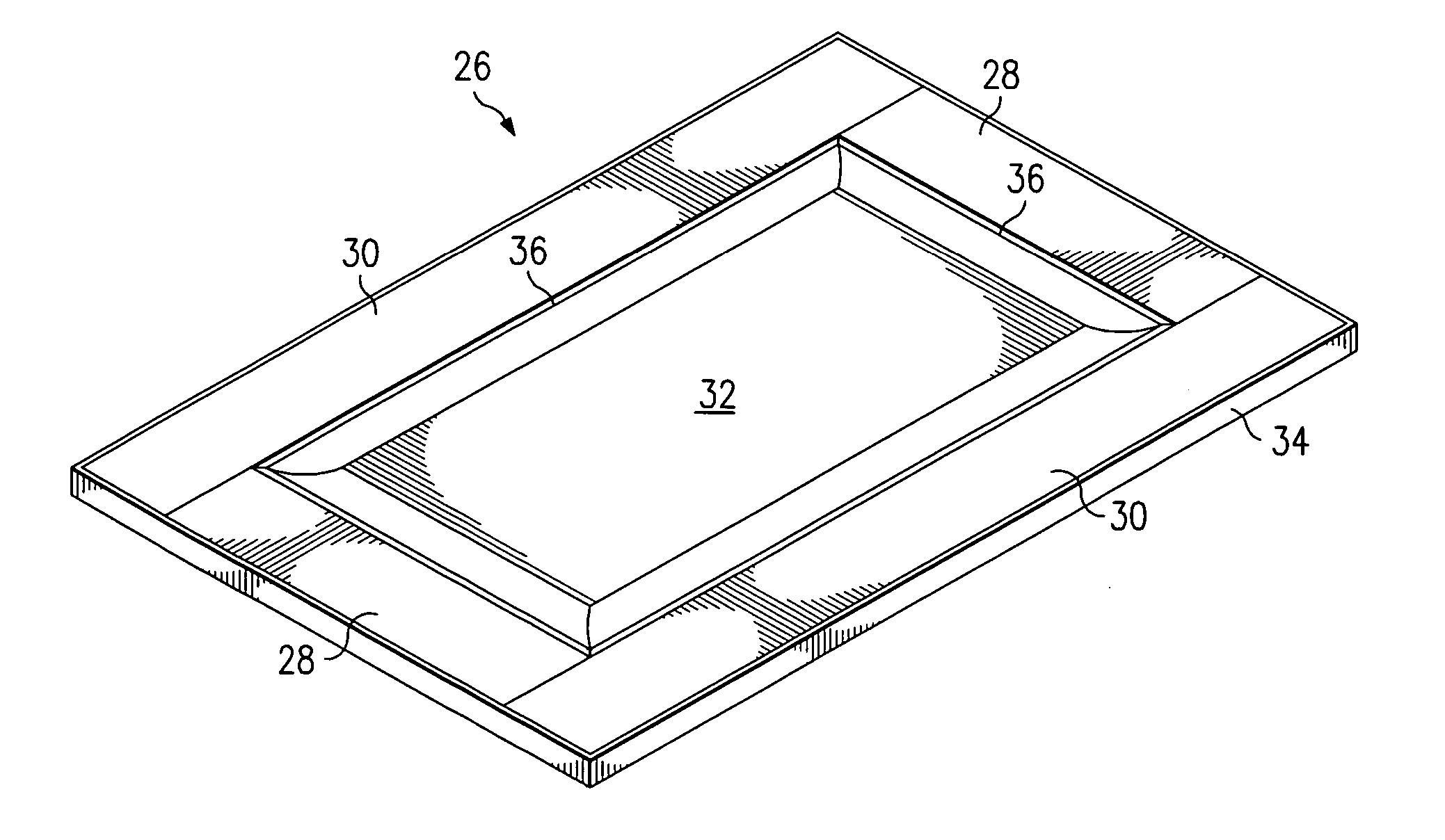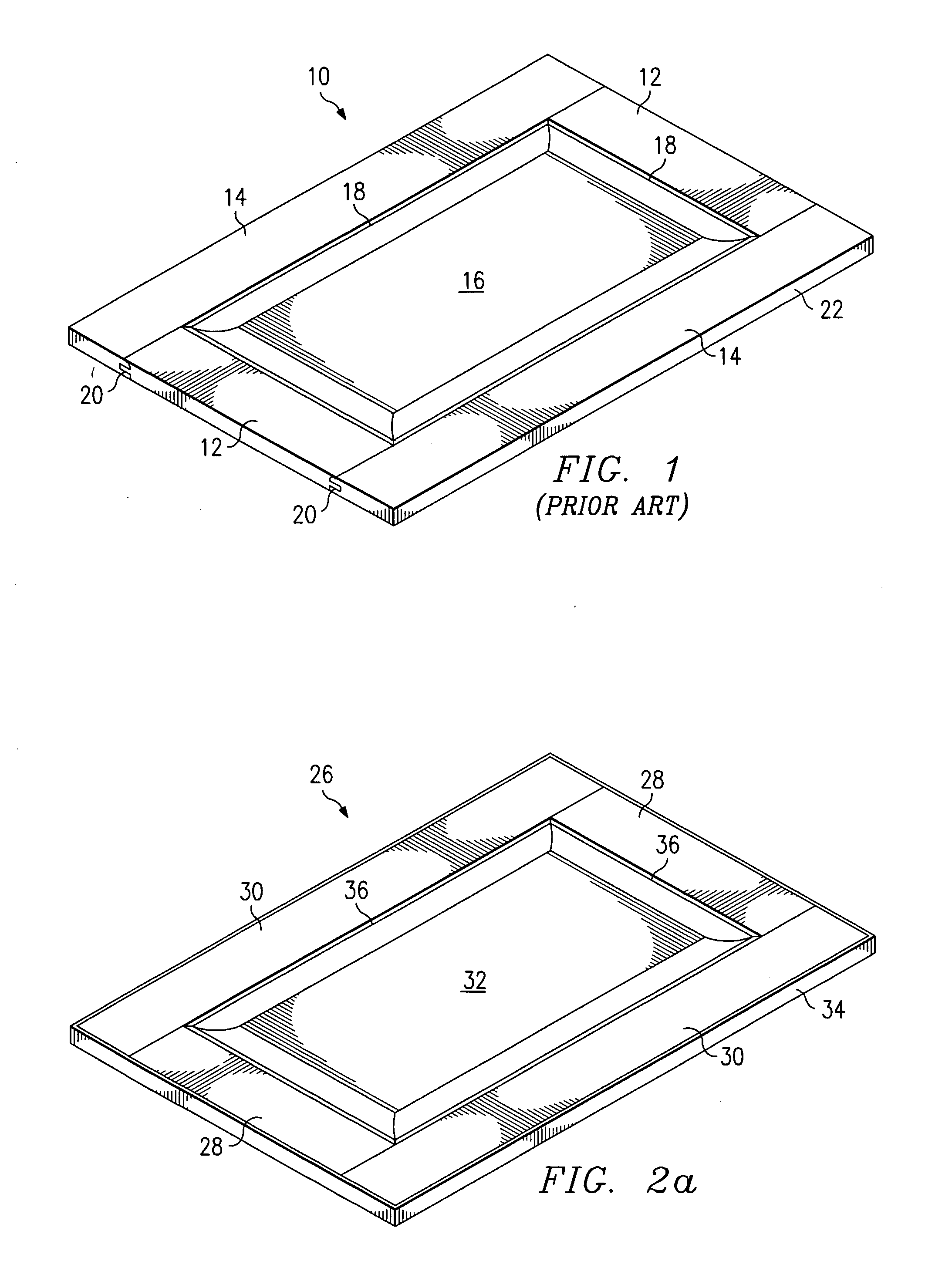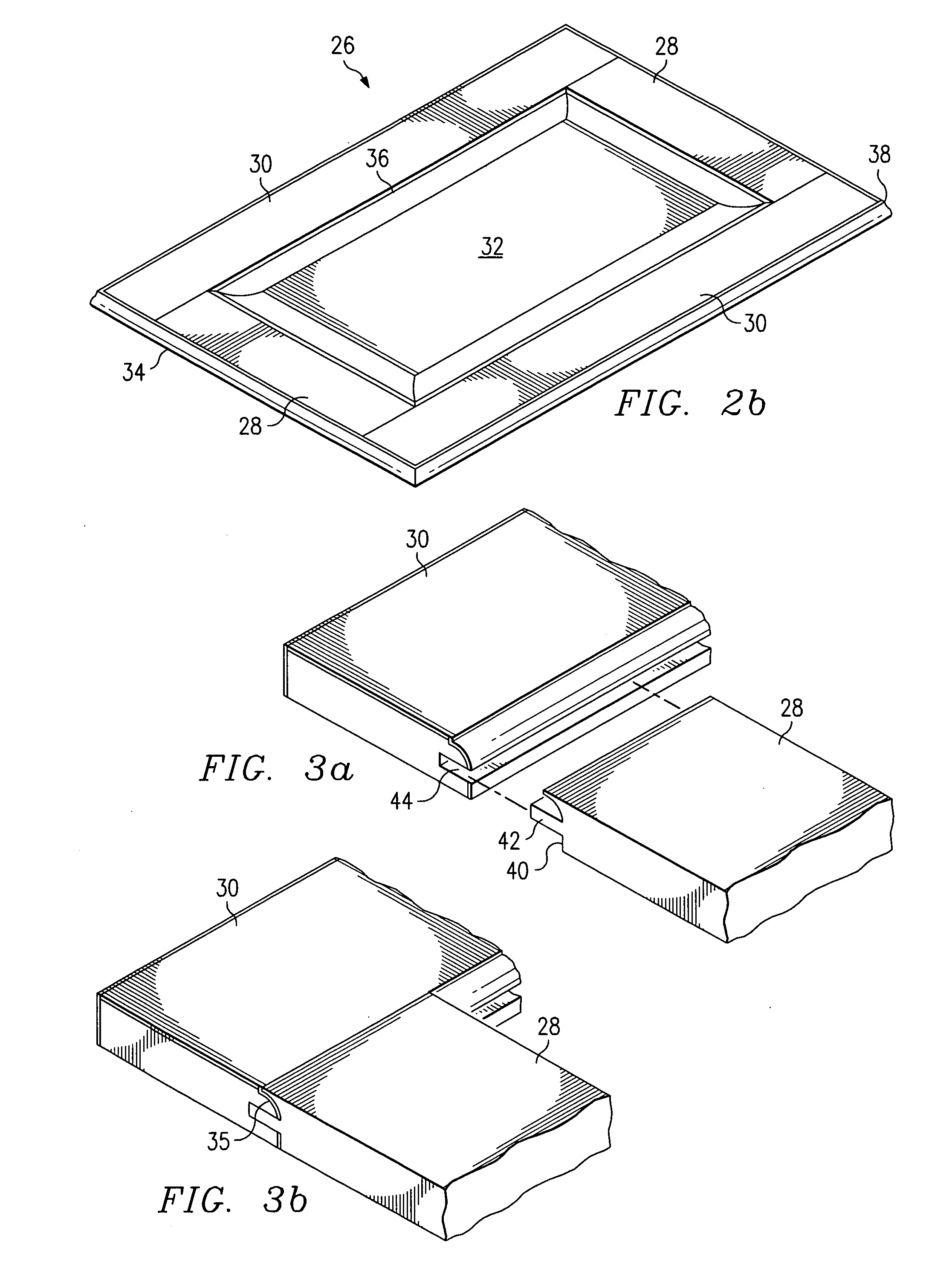Veneered raised panel element and method of manufacturing thereof
a raised panel and raised panel technology, applied in the field of manufacturing of elements, can solve the problems of labor-intensive and expensive manufacturing process, lack of uniform color and grain pattern, door labor intensive and costly, etc., and achieve the effect of avoiding costly solid wood materials, uniform staining, and reducing the amount of wood stock taken
- Summary
- Abstract
- Description
- Claims
- Application Information
AI Technical Summary
Benefits of technology
Problems solved by technology
Method used
Image
Examples
Embodiment Construction
[0030] The making and using of the presently preferred embodiments are discussed in detail below. It should be appreciated, however, that the present invention provides many applicable inventive concepts that can be embodied in a wide variety of specific contexts. The specific embodiments discussed are merely illustrative of specific ways to make and use the invention, and do not limit the scope of the invention.
[0031] With reference now to FIGS. 2a and 2b, there are shown isometric views of preferred embodiment raised panel doors 26. The door 26 comprises horizontally-oriented members or rails 28, vertically-oriented members or stiles 30, a center panel 32, and edge banding 34. The rails 28, stiles 30, and center panel 32 are comprised of a wood veneer laid over a manufactured material such as pressed wood, medium density fiber board (MDF), particle board, chip board, or some other engineered core material. The rails 28 and stiles 30 each contain an inner edge 36 which may be a si...
PUM
 Login to View More
Login to View More Abstract
Description
Claims
Application Information
 Login to View More
Login to View More - R&D
- Intellectual Property
- Life Sciences
- Materials
- Tech Scout
- Unparalleled Data Quality
- Higher Quality Content
- 60% Fewer Hallucinations
Browse by: Latest US Patents, China's latest patents, Technical Efficacy Thesaurus, Application Domain, Technology Topic, Popular Technical Reports.
© 2025 PatSnap. All rights reserved.Legal|Privacy policy|Modern Slavery Act Transparency Statement|Sitemap|About US| Contact US: help@patsnap.com



